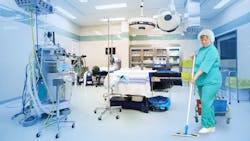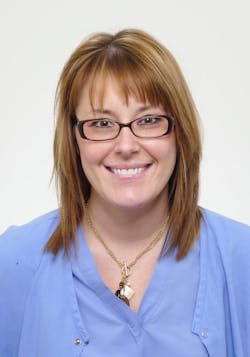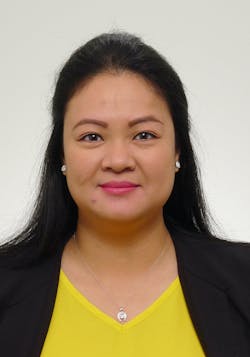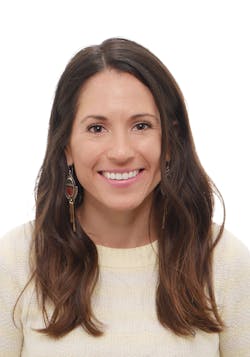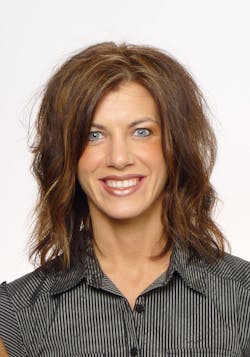Surgical Suite Turnover: Best Practices from Gundersen Health
According to an article published by AORN in 2022 entitled “Speed Up Room Turnovers,” “It’s important to have a standardized method of communication to alert team members that an OR is ready to be cleaned and prepped for the next case. When the surgery is finished and the patient is waking up, we call out ‘status two.’ (“Status one” signifies at the start of the case that the patient is in the room and being anesthetized and “status three” is used when the patient is ready to be transported to recovery.) The status two call notifies our perioperative tech and any available staff members that the patient will be going to recovery, and we will need all hands-on deck to help clean and turn over the room.
“Establishing a methodical approach to room cleaning with clearly defined steps — and educating every staff member on the process — will help your team turn over a room efficiently and correctly. Upon completion of the surgery, task a surgical tech with immediately taking the dirty instruments to the decontamination area while other members of the surgical team stay in the room and start cleaning. After a nurse takes the patient to recovery, they should also assist in the turnover process upon returning.
“Clean the OR from the outside in, from the cleanest to the dirtiest areas. This system also works well because no one is getting in each other’s way or cleaning the same surface twice and wasting time. It also lets any staff member who comes in and asks if they can help to know exactly where the team is in the room turnover process and what still needs to be done.”
Production and Operations Management Society (POMS) published a paper entitled, Maximizing Operating Room Turnover Efficiency via Process Mapping and Critical Path Modeling, by Drew Stapleton, Ph.D. University of Wisconsin La Crosse, and Nada Ghandour, MBA, MD Gundersen-Lutheran Health Systems.
The paper states “Operating room (OR) turnover between surgical cases involves a multitude of variables and individuals that renders tackling the subject quite complex and multifaceted. Creating OR turnover efficiencies is extremely important as OR turnover impacts a number of performance metrics and analytics. For surgeons the time spent transitioning from one case to the next is considered wasted and non-productive and is often the cause of surgeons’ dissatisfaction and complaints. For patients, the time spent waiting for their surgery is often stressful and nerve-racking during which they could be in pain or in serious morbidity. For hospitals’ administration, OR turnover is non-value-added and non-productive since the time spent transitioning OR is most often not reimbursed nor allocated on a shared cost basis which negatively affects return on investment (ROI) and overall productivity. In an era of decreasing reimbursement and the resultant nonescalating pressures to improve efficiency throughout, hospital OR administrators are oftentimes lackadaisical in their effort to improve OR turnover.”
Healthcare Purchasing News wanted to get an update on this topic as we enter 2024, marking four years since the COVID-19 pandemic began. The healthcare system fought the challenges associated with the pandemic, but it should come as no surprise that volume surgical procedures slowed down when COVID was at its highest.
La Cross, Wisc.-based Gundersen Health System (Gundersen Health) is a comprehensive non-profit health system. The system includes multi-specialty group medical practices, a teaching hospital, regional community clinics, affiliate hospitals and clinics, behavioral health services, vision centers, pharmacies, and air and ground ambulances.
Leah Schild MSN, RN, is the clinical operations director, Surgery & Procedures and Dept. of Anesthesiology for Gundersen Health. Healthcare Purchasing News connected with Schild’s team about surgical suite turnover challenges, best practices, and more.
What has Gundersen Health seen in terms of successes or wins in the last 12-28 months?
Alysha Esteves Del Rosario, MSN, RN, professional development nurse, Main OR: We have performed over 100 more surgical procedures in the year 2023 compared to 2022. This highlights the increase in access to care for our communities by introducing service line efficiency—surgery, surgical blocks, and also decreasing patient wait times for surgery.
Carlye Hart, RN, professional development nurse, Gundersen Department of Nursing: We've had a really large increase in cases, especially in OSC [outpatient surgery center] and in the main OR. And really just with the increase in volumes, I think our turnover rate has been consistent along with our outcomes in patient satisfaction—we look at that factor too. I think with this high-volume increase, we really stayed consistent with the standard of care we offer.
Tanya Brueggen, DNP, MBA, RN clinical manager, Integrated Platform and Surgery: We have dramatically increased our first case on time starts as well. About a year ago, we were approximately 65% to 68% of first case on time starts, whereas now, between the main OR and outpatient surgery center, we are consistently approximately 75% on time.
What has recently changed regarding surgical suite turnover? Anything to note pre-COVID vs. post-COVID?
Esteves Del Rosario: Pre-COVID times and during COVID: substitutions and cleaning supplies, which had affected the consistency for IFUs. Also, inconsistent surgical volume during COVID times affected our staff knowledge, so there was not consistent staff being assigned to the perioperative cleaning areas.
Hart: I think post-COVID, having unpredictable staffing shortages, with people being out with COVID and staff having to adapt with the number of help [staff] they may have for that day. We're feeling those effects [now], but definitely during COVID it made staff have to be adaptable to those changes, but that's what we're seeing now post-COVID is just the inconsistency in staffing.
Brueggen: Certainly, the staff turnover was probably the biggest impact that we had during COVID. At one point we were up to 12 travelers in the operating room and main OR. We are now down to zero. So, we've had an impressive turnaround and stabilization in our staffing workforce. We are now rebuilding that and trying to level set, especially in terms of turnover and what the expectations are.
In general, what are the biggest pain points when it comes to surgical suite turnover?
Esteves Del Rosario: The inconsistency of our environmental assist staff being assigned to the perioperative areas. Because of that inconsistency, not all of them are on the same page regarding our perioperative cleaning workflows, which did affect our education and workflow in general.
Another pain point related to turnover is all of the different equipment as our operating rooms grow. There is much more equipment inside each of our operating room suites, so to be able to build that knowledge base with the staff that are doing those turnovers to understand which cleaning products they should be using based on the type of equipment they're cleaning has been a challenge.
Any tips on these pain points?
Hart: First, continuously reevaluating our new procedures, new equipment, and then updating our educational materials and resources for staff helps with those pain points. That is, making sure that staff has the most up to date IFUs, so they know kind of what's going on in our ORs. Continuing to reevaluate and update our resources for staff has helped.
Esteves Del Rosario: For us, with the number of new hires joining our department, it's being consistent with the education that we share with each staff member and ensuring that they follow through with the same processes and workflows.
What kind of education do nurses get in school regarding this?
Brueggen: I started with my associate degree, all the way up to my doctorate degree. And I can tell you I don't believe I received any education as it relates to cleaning and disinfecting specifically within an operating room. And so, this is all very much trained on the job. We really rely on our educators, as well as our quality folks to be providing us data on how we're doing in terms of turnover cleaning and terminal cleaning. Our quality folks do testing on a monthly basis looking at ATP testing, and that provides us with a measure that helps us determine how well we are disinfecting surfaces. Based off of that, we are able to do some targeted action plans with our teams. So, figuring out where are those areas that we're missing, and then really focusing and reminding that team to be concentrating on those areas.
Esteves Del Rosario: In addition, as I recall during my nursing program, there was absolutely no information in regard to perioperative cleaning. We do have students that do a shadow within our operative departments and the focus on that is mostly on the actual surgical procedure and learning about the roles, each role within the OR. They are only present during the surgical procedure and do not see anything in regard to turnover time and opening for a new surgical case.
What are some surgical suite turnover best practices that our audience should be aware of?
Brueggen: We follow AORN’s [Association of periOperative Registered Nurses] guidelines. We also really focus on a team approach to understanding who's doing what when it comes to turnover cleaning. We try to minimize it to keep it to three folks because if you get more than that it gets to be hard to understand who has cleaned what and then there ends up being duplication or things ended up getting missed. And so really setting the expectations of who's doing what during that turnover cleaning so everybody knows their role to help make it more efficient. We have historically compared this process to a racetrack. When the car pulls into the pit stop and you have your pit crew, everybody knows the role. It's quite efficient. It's done well. And then that race car goes back out on the track.
Esteves Del Rosario: One of the main focuses for perioperative cleaning for our surgical procedures was developing competencies for all our perioperative areas and ensuring that the education and the resources provided were all the same or basically on the same page, therefore being consistent in training and keeping up the workflows for our ORs.
What does the next 5-10 years look like in this space? Any innovations to note?
Brueggen: I am not sure what is possible out there in terms of increasing cleaning and disinfection for operating rooms, but in terms of turnover there are a lot of different products coming out to help increase room turnover. So, an example would be the sterile bubble pack. Instead of opening multiple pans for a total joint case -- we typically have a lot of pans involved in those cases -- there's a kind that comes in a bubble so you would open it up, take the lid off, and all of the pans would be right there. So that saves a ton of time in terms of the amount of pans that the circulator and scrubs are having to open prior to the case getting started. That type of advancement is definitely going to help increase turnover.
